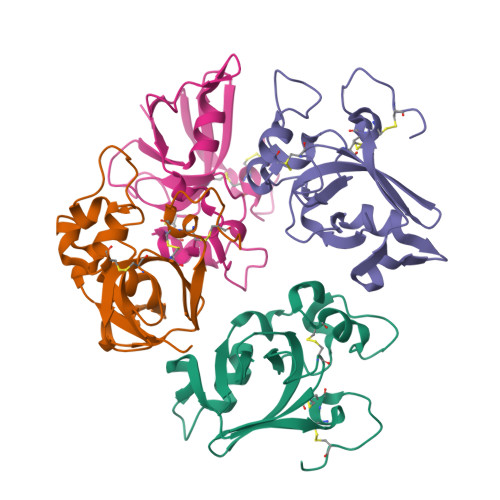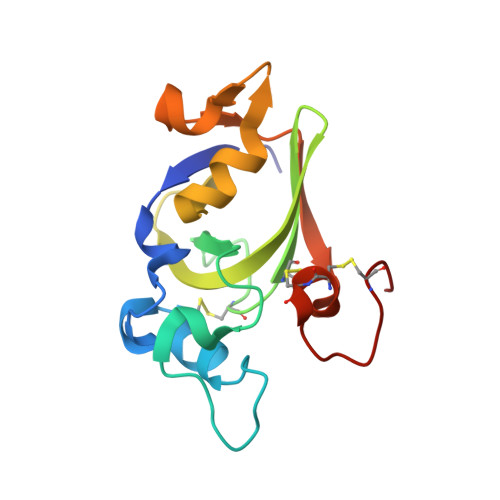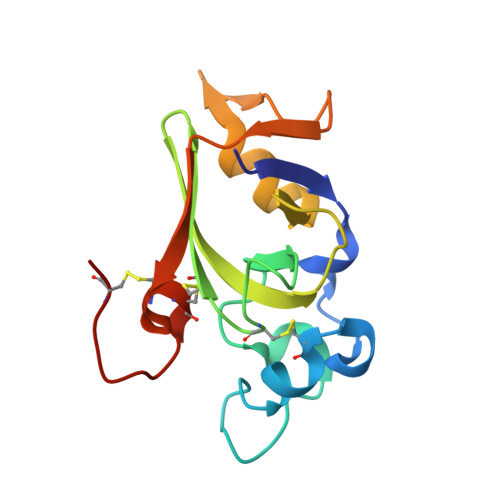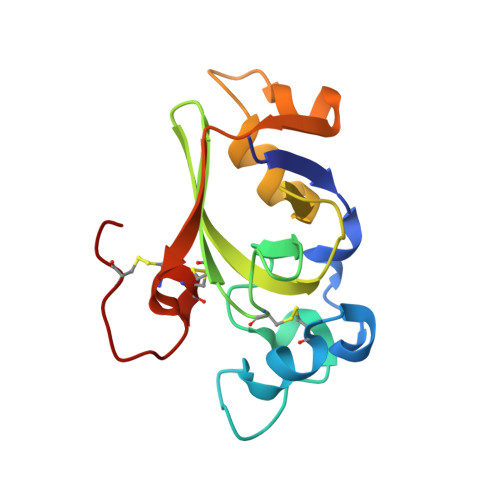Functional diversification of cerato-platanins in Moniliophthora perniciosa as seen by differential expression and protein function specialization.
de O Barsottini, M.R., de Oliveira, J.F., Adamoski, D., Teixeira, P.J., do Prado, P.F., Tiezzi, H.O., Sforca, M.L., Cassago, A., Portugal, R.V., de Oliveira, P.S., de M Zeri, A.C., Dias, S.M., Pereira, G.A., Ambrosio, A.L.(2013) Mol Plant Microbe Interact 26: 1281-1293
- PubMed: 23902259
- DOI: https://doi.org/10.1094/MPMI-05-13-0148-R
- Primary Citation of Related Structures:
3SUJ, 3SUK, 3SUL, 3SUM - PubMed Abstract:
Cerato-platanins (CP) are small, cysteine-rich fungal-secreted proteins involved in the various stages of the host-fungus interaction process, acting as phytotoxins, elicitors, and allergens. We identified 12 CP genes (MpCP1 to MpCP12) in the genome of Moniliophthora perniciosa, the causal agent of witches' broom disease in cacao, and showed that they present distinct expression profiles throughout fungal development and infection. We determined the X-ray crystal structures of MpCP1, MpCP2, MpCP3, and MpCP5, representative of different branches of a phylogenetic tree and expressed at different stages of the disease. Structure-based biochemistry, in combination with nuclear magnetic resonance and mass spectrometry, allowed us to define specialized capabilities regarding self-assembling and the direct binding to chitin and N-acetylglucosamine (NAG) tetramers, a fungal cell wall building block, and to map a previously unknown binding region in MpCP5. Moreover, fibers of MpCP2 were shown to act as expansin and facilitate basidiospore germination whereas soluble MpCP5 blocked NAG6-induced defense response. The correlation between these roles, the fungus life cycle, and its tug-of-war interaction with cacao plants is discussed.





















